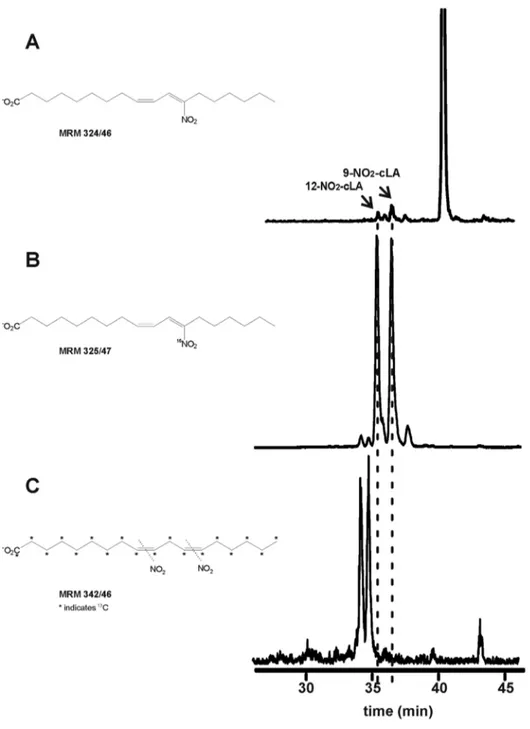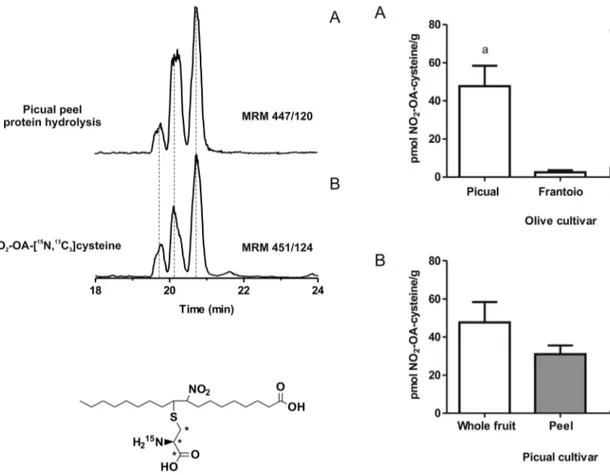Olives and olive oil are sources of electrophilic fatty acid nitroalkenes.
Texto
Imagem

![Figure 3. NO 2 -OA generation from EVOO by in vitro digestion modeling. Olive oil was nitrated, extracted and treated with Na[ 15 N]O 2 as in Figure 2](https://thumb-eu.123doks.com/thumbv2/123dok_br/17203589.242966/6.918.94.825.430.1003/figure-generation-digestion-modeling-nitrated-extracted-treated-figure.webp)

Documentos relacionados
Fatty acid transduction of nitric oxide signaling: multiple nitrated unsaturated fatty acid derivatives exist in human blood and urine and serve as endogenous
The fatty acid profile showed that linoleic acid, palmitic acid, oleic acid, stearic acid and linolenic acid (above 0.55 g/100 g) as the most abundant fatty acids followed
Cattle with zebu genes had the highest rates in unsaturated fatty acids, saturated fatty acids represented approximately 50% of total fatty acid composition on Longissimus
Figure 5 – Composition of lipids in the sediment samples (ss) and leaf extracts (sterols, triterpenols, unsaturated fatty acids, saturated fatty acids and aliphatic
Therefore, considering the obtained results herein, and despite of the higher amounts of arachidonic acid and docosahexaenoic acid- which are essential fatty acids for
Fatty acid composition (percentage of total fatty acids as methyl esters) of oil extracted from “alcaparras” stoned table olives samples from three different years of
spiralis is distinct from the other studied species for having similar amounts of saturated and unsaturated fatty acids (considering unsaturated fatty acids as the sum
Since insulin and glucose levels are reduced, while fatty acid and NE levels are increased during fasting, it is likely that elevated levels of fatty acids and NE play a major role